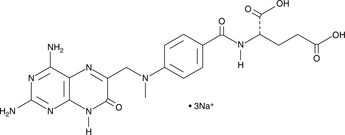Proteases
Proteases is a general term for a class of enzymes that hydrolyze protein peptide chains. According to the way they degrade polypeptides, they are divided into two categories: endopeptidases and telopeptidases. The former can cut the large molecular weight polypeptide chain from the middle to form prions and peptones with smaller molecular weights; the latter can be divided into carboxypeptidase and aminopeptidase, which respectively remove the peptide from the free carboxyl terminus or free amino terminus of the polypeptide one by one. Chain hydrolysis produces amino acids.
A general term for a class of enzymes that hydrolyze peptide bonds in proteins. According to the way they hydrolyze polypeptides, they can be divided into endopeptidases and exopeptidases. Endopeptidase cleaves the interior of the protein molecule to form smaller molecular weight peptones and peptones. Exopeptidase hydrolyzes peptide bonds one by one from the end of the free amino group or carboxyl group of protein molecules, and frees amino acids, the former is aminopeptidase and the latter is carboxypeptidase. Proteases can be classified into serine proteases, sulfhydryl proteases, metalloproteases and aspartic proteases according to their active centers and optimum pH. According to the optimum pH value of its reaction, it is divided into acidic protease, neutral protease and alkaline protease. The proteases used in industrial production are mainly endopeptidases.
Proteases are widely found in animal offal, plant stems and leaves, fruits and microorganisms. Microbial proteases are mainly produced by molds and bacteria, followed by yeast and actinomycetes.
Enzymes that catalyze the hydrolysis of proteins. There are many kinds, the important ones are pepsin, trypsin, cathepsin, papain and subtilisin. Proteases have strict selectivity for the reaction substrates they act on. A protease can only act on certain peptide bonds in protein molecules, such as the peptide bonds formed by the hydrolysis of basic amino acids catalyzed by trypsin. Proteases are widely distributed, mainly in the digestive tract of humans and animals, and are abundant in plants and microorganisms. Due to limited animal and plant resources, the industrial production of protease preparations is mainly prepared by fermentation of microorganisms such as Bacillus subtilis and Aspergillus terrestris.
Targets for Proteases
- Caspase(114)
- Aminopeptidase(24)
- ACE(74)
- Calpains(20)
- Carboxypeptidase(10)
- Cathepsin(81)
- DPP-4(31)
- Elastase(26)
- Gamma Secretase(67)
- HCV Protease(59)
- HSP(113)
- HIV Integrase(37)
- HIV Protease(47)
- MMP(228)
- NS3/4a protease(8)
- Serine Protease(18)
- Thrombin(58)
- Urokinase(4)
- Cysteine Protease(0)
- Other Proteases(18)
- Tyrosinases(47)
- 15-PGDH(1)
- Acetyl-CoA Carboxylase(13)
- Acyltransferase(59)
- Aldehyde Dehydrogenase (ALDH)(28)
- Aminoacyl-tRNA Synthetase(9)
- ATGL(1)
- Dipeptidyl Peptidase(56)
- Drug Metabolite(457)
- E1/E2/E3 Enzyme(90)
- Endogenous Metabolite(1636)
- FABP(30)
- Farnesyl Transferase(23)
- Glutaminase(14)
- Glutathione Peroxidase(14)
- Isocitrate Dehydrogenase (IDH)(28)
- Lactate Dehydrogenase(17)
- Lipoxygenase(234)
- Mitochondrial Metabolism(207)
- NEDD8-activating Enzyme(7)
- Neprilysin(12)
- PAI-1(13)
- Ser/Thr Protease(41)
- Tryptophan Hydroxylase(13)
- Xanthine Oxidase(18)
- MALT1(10)
- PCSK9(1)
Products for Proteases
- Cat.No. Nom du produit Informations
-
GC40378
5(S)-HEPE
5(S)-HEPE is produced by 5-lipoxygenase catalyzed oxidation of eicosapentaenoic acid (EPA).

-
GC40460
5(S)-HETE
5(S)-HETE is produced by the action of 5-LO on arachidonic acid to give 5(S)-HpETE, followed by reduction of the hydroperoxide.

-
GC40829
5(S)-HETE lactone
5(S)-HETE lactone is a cyclic ester formed by acid-catalyzed nucleophilic addition of the C-5 hydroxyl to the C-1 carboxyl of 5(S)-HETE.
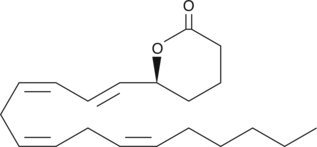
-
GC46679
5(S)-HETE-d8
An internal standard for the quantification of 5-HETE

-
GC42479
5(S)-HETrE
5(S)-HETrE is produced by the action of 5-LO when mead acid is the substrate.

-
GC41105
5(S)-HpEPE
5(S)-HpEPE is a monohydroperoxy polyunsaturated fatty acid produced by the action of 5-LO on EPA.

-
GC40784
5(Z),8(Z),14(Z)-Eicosatrienoic Acid
5(Z),8(Z),14(Z)-Eicosatrienoic acid is a polyunsaturated fatty acid that can be a substrate for 5-lipoxygenase (5-LO).

-
GC40830
5,6-dehydro Arachidonic Acid
5,6-dehydro Arachidonic acid is an analog of arachidonic acid with an acetylene in the 5,6 position.

-
GC18542
5,6-dihydro-5-Fluorouracil
5,6-dihydro-5-Fluorouracil (5-FUH2) is formed by the hydrogenation of 5-fluorouracil via the enzyme dihydropyrimidine dehydrogenase (DPD).
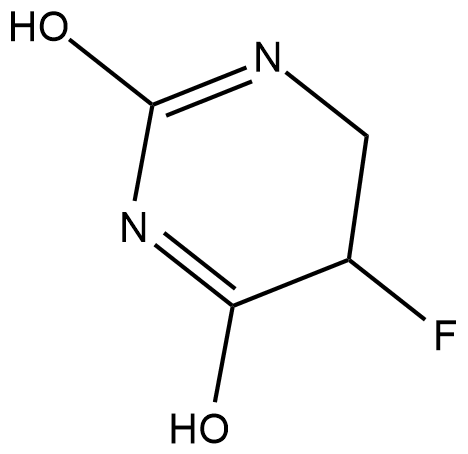
-
GC35152
5,6-Dihydro-5-methyluracil
Le 5,6-dihydro-5-méthyluracile (dihydrothymine), un produit de dégradation intermédiaire de la thymine, provient d'animaux ou de plantes.
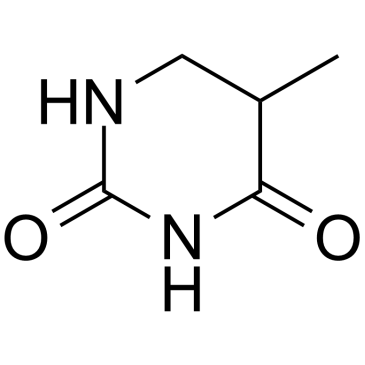
-
GC33650
5,6-Dihydrouracil
Le 5,6-dihydrouracile (5,6-5,6-dihydrouracile), un métabolite de l'uracile, peut être utilisé comme marqueur pour l'identification de la dihydropyrimidine déshydrogénase (DPD) déficiente.
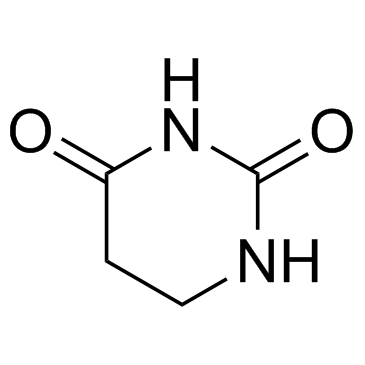
-
GC33502
5,6-Dihydrouridine
La 5,6-dihydrouridine est une base modifiée trouvée dans des positions conservées dans la boucle D de l'ARNt chez les bactéries, les eucaryotes et certaines archées.
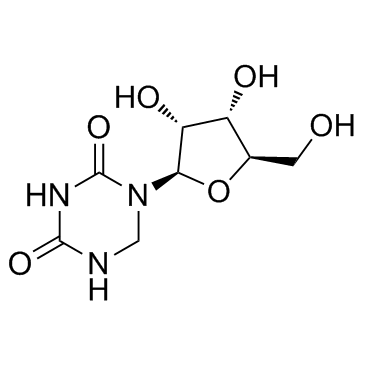
-
GC42484
5,6-dihydroxy Indole
Le 5,6-dihydroxy indole, précurseur de la mélanine, possède une activité antibactérienne, antifongique, antivirale, antiparasitaire à large spectre.

-
GC38286
5,6-Dimethyl-1H-benzo[d]imidazole
Le 5,6-diméthyl-1H-benzo[d]imidazole est un métabolite endogène.
![5,6-Dimethyl-1H-benzo[d]imidazole Chemical Structure 5,6-Dimethyl-1H-benzo[d]imidazole Chemical Structure](/media/struct/GC3/GC38286.png)
-
GC18466
5,6-epoxy-13-cis Retinoic Acid
5,6-epoxy-13-cis Retinoic acid is a metabolite of 13-cis retinoic acid.
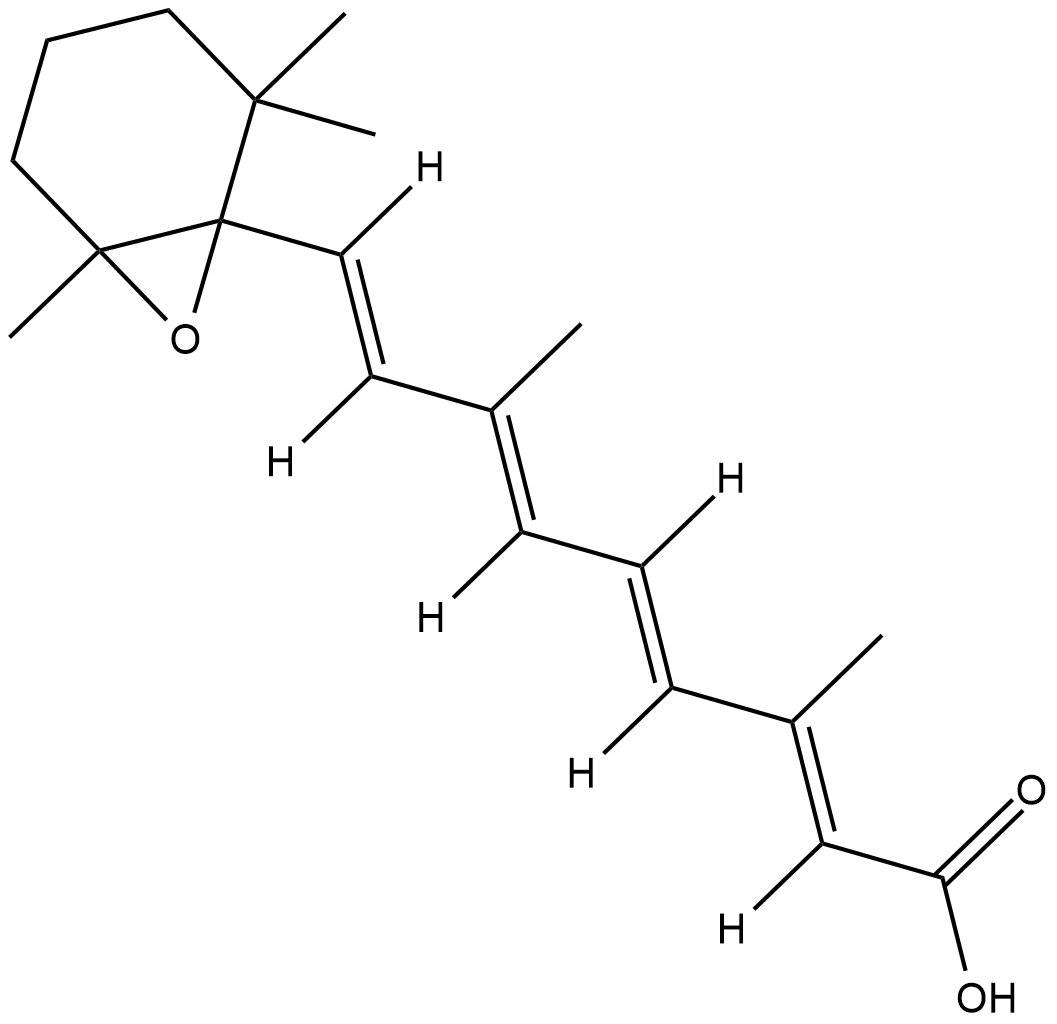
-
GC35150
5,7,4'-Trimethoxyflavone
La 5,7,4'-triméthoxyflavone est isolée de Kaempferia parviflora (KP) qui est une célèbre plante médicinale de Thaïlande. La 5,7,4'-triméthoxyflavone induit l'apoptose, comme en témoignent les augmentations de la phase sous-G1, la fragmentation de l'ADN, la coloration annexine-V/PI, le rapport Bax/Bcl-xL, l'activation protéolytique de la caspase-3 et la dégradation de la poly (ADP-ribose) polymérase (PARP). La 5,7,4'-triméthoxyflavone est significativement efficace pour inhiber la prolifération des cellules cancéreuses gastriques humaines SNU-16 d'une manière dépendante de la concentration.
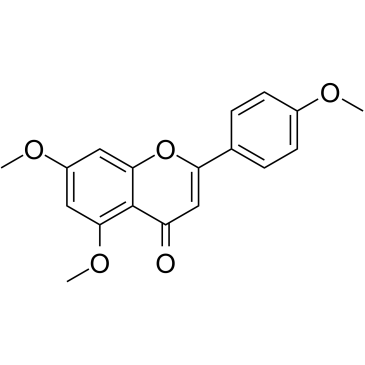
-
GN10629
5,7-dihydroxychromone
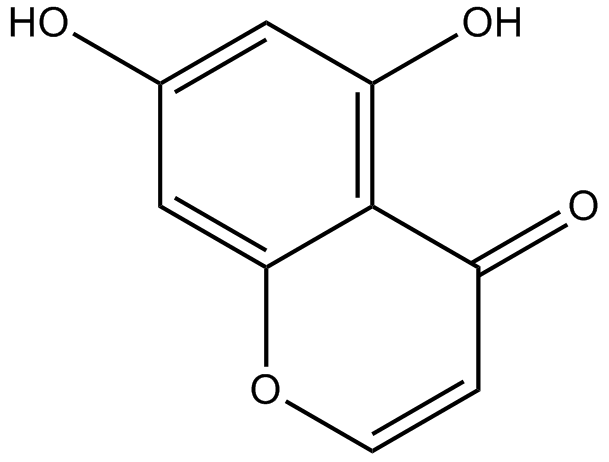
-
GC52227
5-(3',4'-Dihydroxyphenyl)-γ-Valerolactone
An active metabolite of various polyphenols

-
GC38882
5-ALA benzyl ester hydrochloride
Le chlorhydrate d'ester benzylique de 5-ALA (chlorhydrate de Benzyl-ALA) est un précurseur de la protoporphyrine utilisé comme agent de photodétection. Le chlorhydrate d'ester benzylique de 5-ALA induit une accumulation de protoporphyrine IX (PPIX) dans les lignées cellulaires de carcinome du cÔlon.
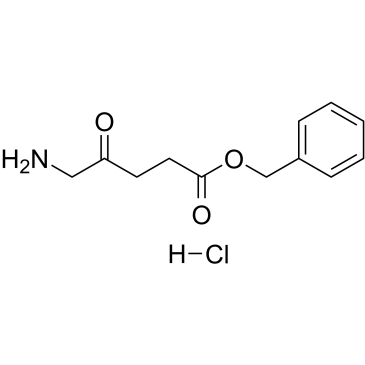
-
GC35156
5-Amino-3H-imidazole-4-Carboxamide
Le 5-Amino-3H-imidazole-4-Carboxamide (AICA) est un précurseur important pour la synthèse des purines en général et des nucléobases adénine et guanine en particulier.
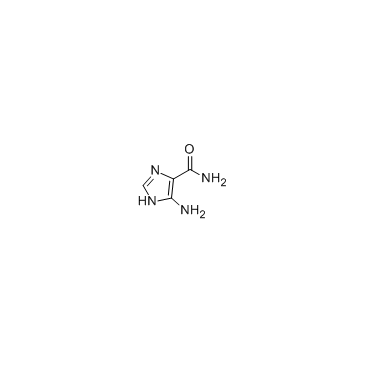
-
GC32608
5-Amino-4-oxopentanoic acid
L'acide 5-amino-4-oxopentanoÏque (5-ALA) est un acide aminé non protéique qui joue un rÔle limitant dans la biosynthèse de l'hème.
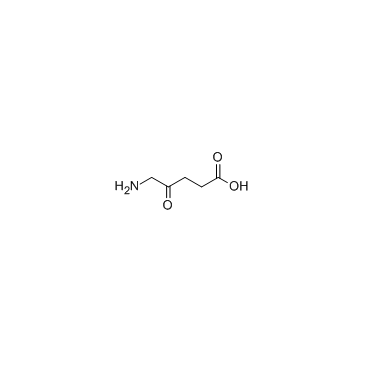
-
GC45356
5-Aminolevulinic Acid (hydrochloride)

-
GC52413
5-Aminosalicylic Acid-d7
An internal standard for the quantification of 5-aminosalicylic acid

-
GC12713
5-Aminovaleric acid hydrochloride
On pense que le chlorhydrate d'acide 5-aminovalérique agit comme un homologue méthylène de l'acide gamma-aminobutyrique (GABA) et fonctionne comme un agoniste faible du GABA.
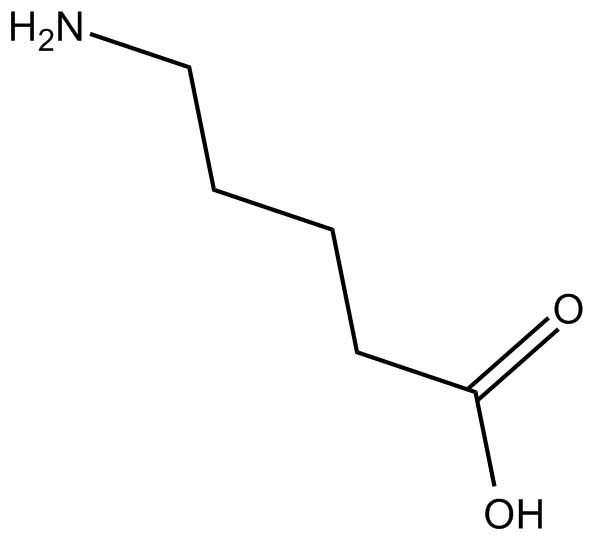
-
GN10062
5-HTP

-
GC49655
5-hydroxy Buspirone
A metabolite of buspirone

-
GC42546
5-hydroxy Diclofenac
5-hydroxy Diclofenac is a metabolite of the NSAID diclofenac formed by the cytochrome P450 (CYP) isoform CYP3A4.

-
GC49119
5-hydroxy Flunixin
A metabolite of flunixin

-
GC49315
5-hydroxy Indomethacin
A metabolite of indomethacin

-
GC41312
5-hydroxy Omeprazole
5-hydroxy Omeprazole is a major metabolite of omeprazole, an inhibitor of the gastric H+/K+-ATPase pump.
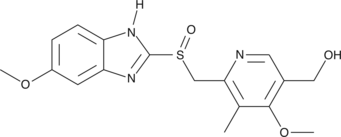
-
GC42549
5-hydroxy Thiabendazole
5-hydroxy Thiabendazole (5-OH TBZ) is a major metabolite of the anthelmintic thiabendazole.

-
GC12829
5-hydroxy Tryptophol
Le 5-hydroxy tryptophol est un métabolite de la sérotonine chez les mammifères, agissant comme un marqueur de la consommation aiguë d'alcool.
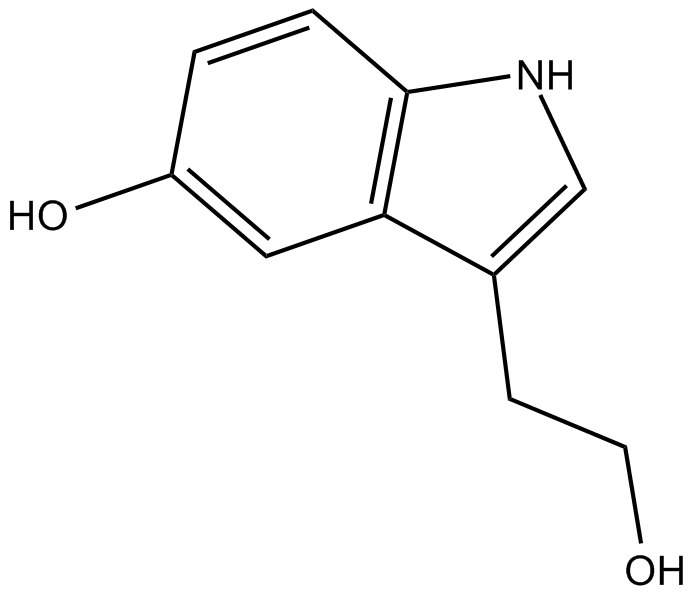
-
GC60529
5-Hydroxy-2'-deoxyuridine
La 5-hydroxy-2'-désoxyuridine (5-OHdU) est un produit d'oxydation stable majeur de la 2'-désoxycytidine.
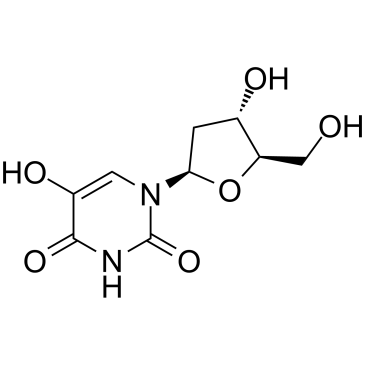
-
GC42550
5-hydroxy-6-methoxy (S)-Duloxetine
5-hydroxy-6-methoxy (S)-Duloxetine is a metabolite of (S)-duloxetine.

-
GC30613
5-Hydroxydopamine hydrochloride
La 5-hydroxydopamine est une amine naturellement présente dans l'urine humaine.
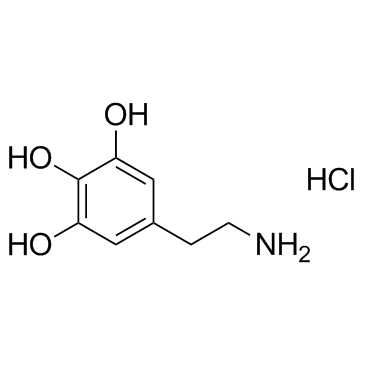
-
GC33698
5-Hydroxyindole-3-acetic acid
L'acide 5-hydroxyindole-3-acétique est le principal métabolite de la sérotonine ou métanéphrines, qui peut être utilisé comme biomarqueur des tumeurs neuroendocrines.
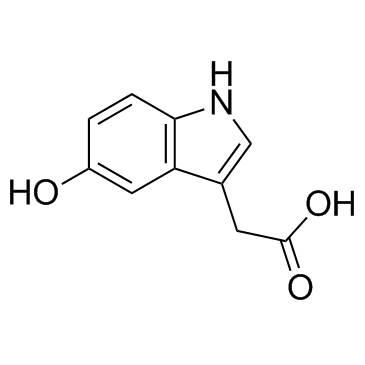
-
GC42551
5-hydroxymethyl Tolterodine (formate)
5-hydroxymethyl Tolterodine is an active metabolite of the muscarinic acetylcholine receptor antagonists tolterodine and fesoterodine.

-
GC30189
5-Hydroxymethyl-2-furancarboxylic acid
L'acide 5-hydroxyméthyl-2-furancarboxylique est le principal métabolite du 5-hydroxyméthyl-2-furfural (HMF) dans l'organisme et éliminé par les reins.
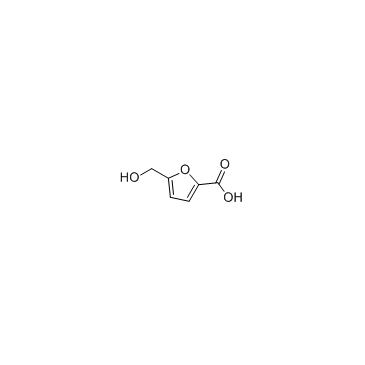
-
GC33613
5-Hydroxymethyluracil
Le 5-hydroxyméthyluracile est un produit de dommages oxydatifs À l'ADN.
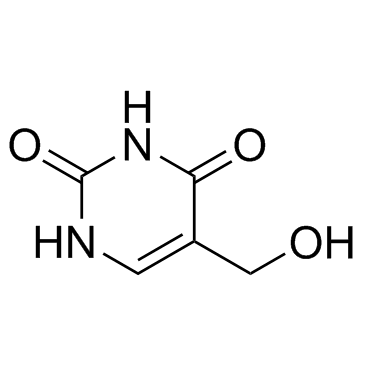
-
GC62810
5-Hydroxytryptamine creatinine sulfate monohydrate
Le monohydrate de sulfate de créatinine de 5-hydroxytryptamine est un métabolite endogène.
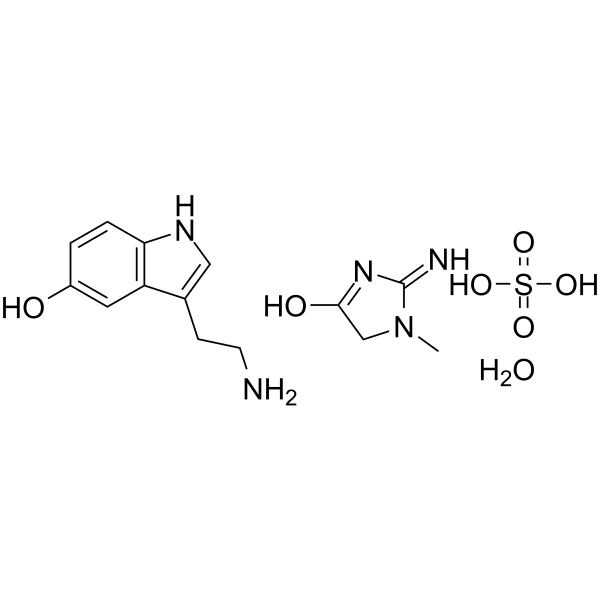
-
GC67951
5-Hydroxytryptophol-d4
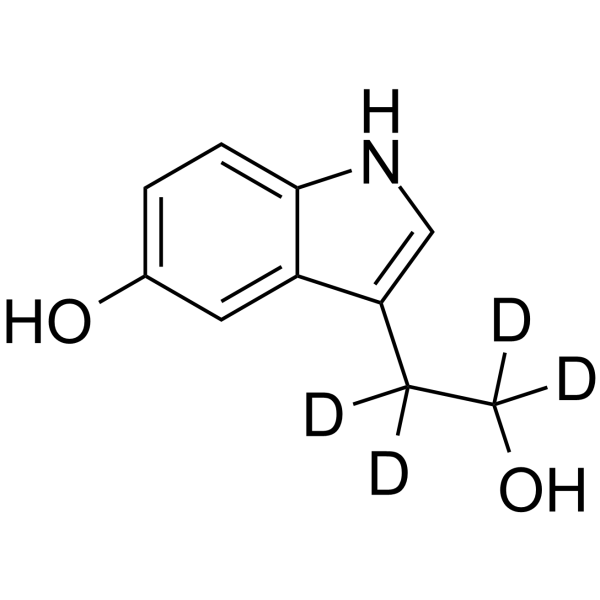
-
GC31997
5-Lipoxygenase-In-1
La 5-Lipoxygénase-In-1 est un inhibiteur de la 5-Lipoxygénase extrait du brevet EP 331232 A2, tableau 4, exemple composé 4.10.
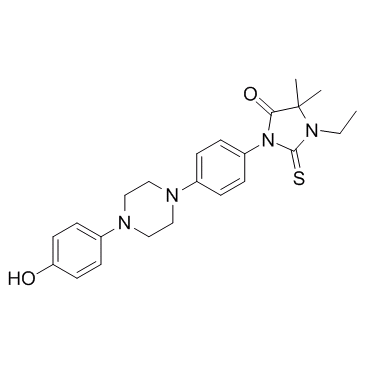
-
GC66031
5-LOX-IN-1
5-LOX-IN-1 (composé 2b) est un inhibiteur de la 5-lipoxygénase humaine (5-LOX) avec une valeur IC50 de 2,3 μM. 5-LOX-IN-1 peut être utilisé pour la recherche de l'inflammation.
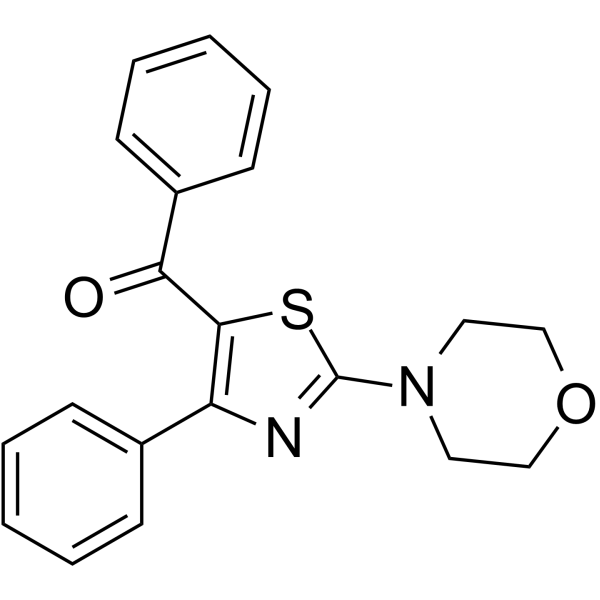
-
GC62811
5-Methoxy-5-oxopentanoic acid
L'acide 5-méthoxy-5-oxopentanoÏque est un métabolite endogène.
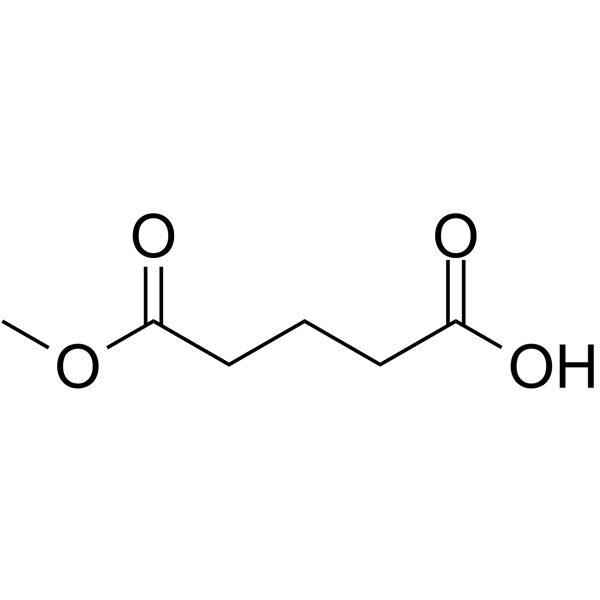
-
GC38058
5-Methoxy-DL-tryptophan
Le 5-méthoxy-DL-tryptophane est un métabolite endogène.
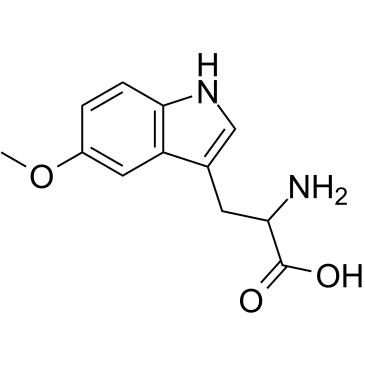
-
GC46078
5-Methoxyindole-3-acetic acid
L'acide 5-méthoxyindole-3-acétique est un métabolite de la mélatonine.

-
GC64182
5-Methoxytryptamine hydrochloride
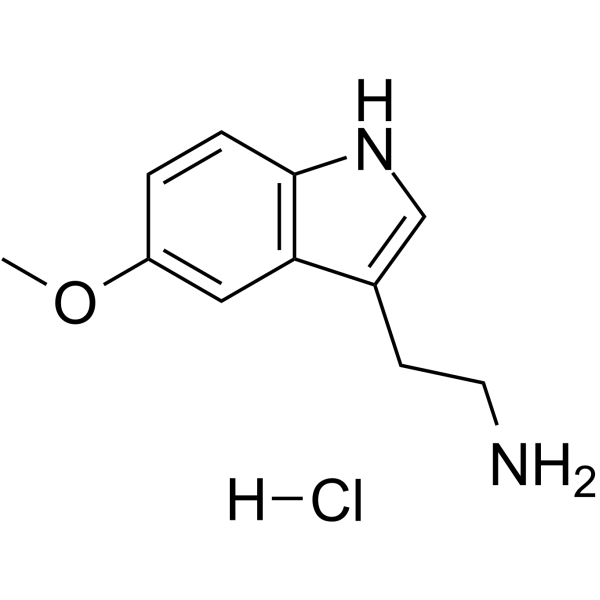
-
GC30712
5-Methoxytryptophol
Le 5-méthoxytryptophol est un indole naturel présent dans la glande pinéale.
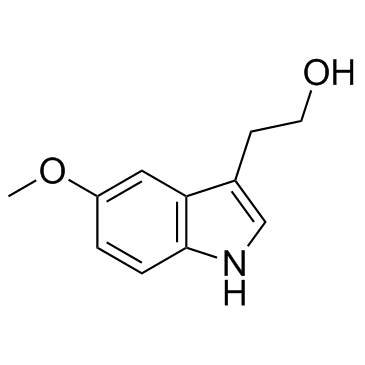
-
GC42562
5-Methyl-2'-deoxycytidine
La 5-méthyl-2'-désoxycytidine dans l'ADN simple brin peut agir en cis pour signaler la méthylation de novo de l'ADN .

-
GC33526
5-Methylcytidine
La 5-méthylcytidine est un nucléoside pyrimidique détecté dans plusieurs biofluides.
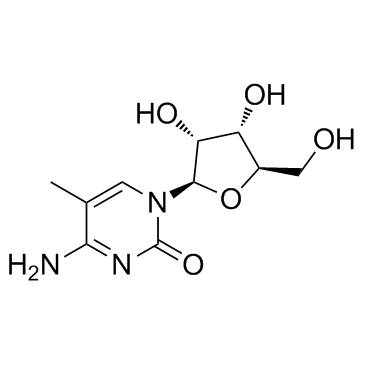
-
GC35166
5-Methylcytosine
La 5-méthylcytosine est une modification de l'ADN bien caractérisée et se trouve également principalement dans les ARN non codants abondants chez les procaryotes et les eucaryotes.
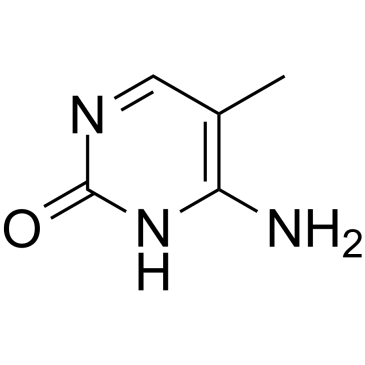
-
GC34881
5-Methyltetrahydrofolic acid
L'acide 5-méthyltétrahydrofolique (5-méthyl THF) est une forme biologiquement active de l'acide folique.
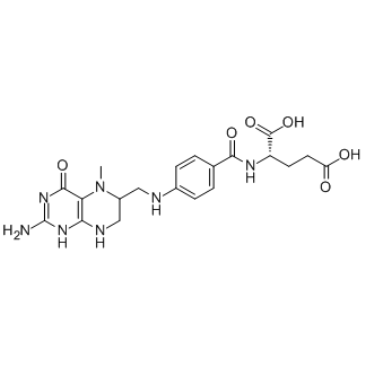
-
GC33514
5-Methyluridine
La 5-méthyluridine est un nucléoside méthylé endogène présent dans les fluides humains.
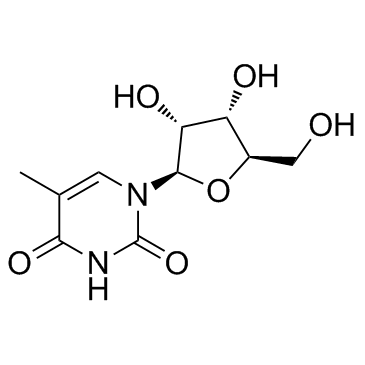
-
GC68228
5-Nitro-1,10-phenanthroline

-
GC35168
5-O-Demethylnobiletin
La 5-O-déméthylnobilétine (5-déméthylnobilétine), une polyméthoxyflavone isolée de Sideritis tragoriganum, est une inhibition directe de la 5-LOX (IC50 = 0,1 μM), sans affecter l'expression de la COX-2.
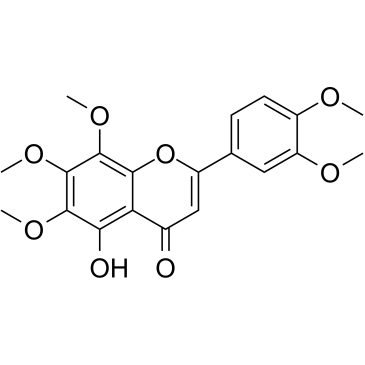
-
GC41310
5-Octyl-α-ketoglutarate
In addition to its role in the Krebs cycle, α-ketoglutarate (2-oxoglutarate) has roles as a substrate or modulator of enzymes.

-
GC40380
5-OxoETE
5-OxoETE is a polyunsaturated keto acid formed by the oxidation of 5-HETE in human neutrophils by a specific dehydrogenase.

-
GC41322
5-OxoETE methyl ester
5-OxoETE methyl ester is an esterified form of the polyunsaturated keto acid 5-oxoETE.

-
GC62814
5-Phenylvaleric acid
L'acide 5-phénylvalérique (acide 5-phénylpentanoÏque) est un acide pentanoÏque d'origine bactérienne, parfois présent dans les biofluides humains.
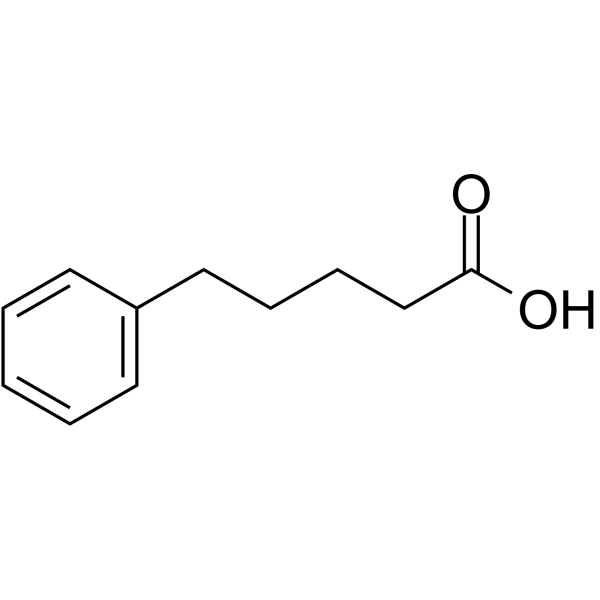
-
GC11101
5-R-Rivaroxaban
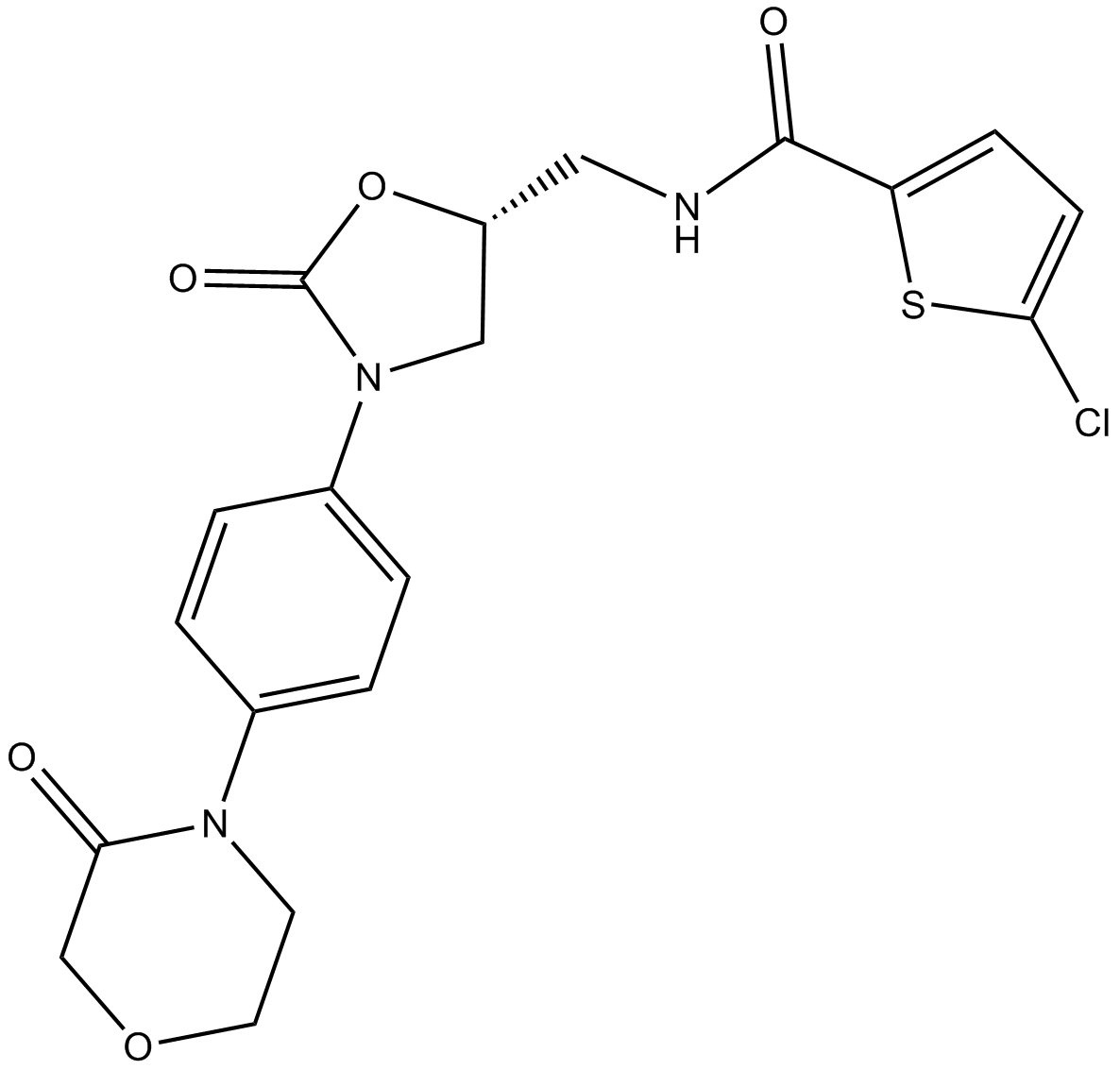
-
GC32410
5a-Pregnane-3,20-dione
La 5a-prégnane-3,20-dione est le métabolite endogène de la progestérone.
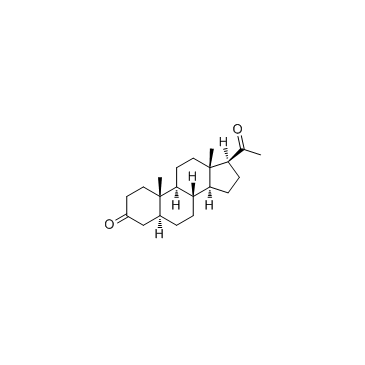
-
GC68374
5a-Pregnane-3,20-dione-d6
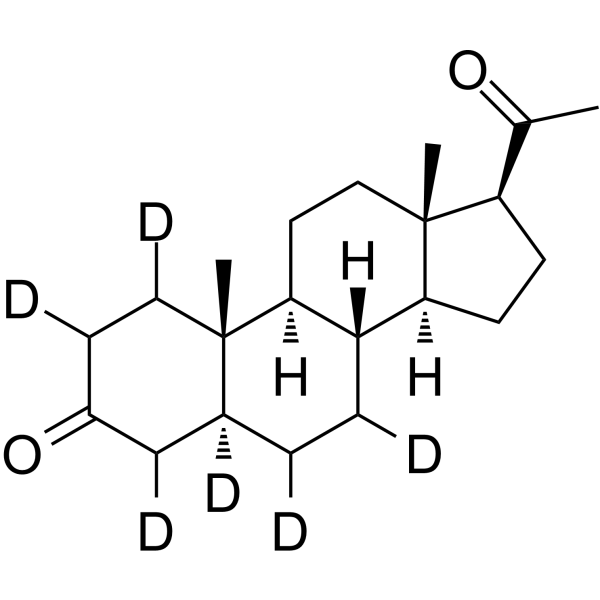
-
GC42586
6α-hydroxy Paclitaxel
6α-hydroxy Paclitaxel est un métabolite primaire du Paclitaxel. 6α-hydroxy Le paclitaxel conserve un effet dépendant du temps sur les polypeptides transporteurs d'anions organiques 1B1/SLCO1B1 (OATP1B1) avec une puissance d'inhibition similaire À celle du paclitaxel, alors qu'il n'a plus montré d'inhibition dépendante du temps de l'OATP1B3. 6α-hydroxy Paclitaxel peut être utilisé pour la recherche sur le cancer.

-
GC49676
6β-hydroxy Budesonide
A metabolite of budesonide
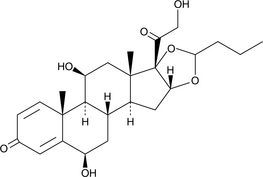
-
GC45969
6β-hydroxy Eplerenone
A major metabolite of eplerenone

-
GC49629
6β-hydroxy Prednisolone
A metabolite of prednisolone

-
GC41424
6(S)-Lipoxin A4
The lipoxins are trihydroxy fatty acids containing a 7,9,11,13-conjugated tetraene.

-
GC49749
6-Deoxypenciclovir
An inactive metabolite of famciclovir

-
GC41224
6-diazo-5-oxo-L-nor-Leucine
La 6-Diazo-5-oxo-L-nor-Leucine (DON) est un analogue de la glutamine qui inhibe les glutaminases, un inactivateur sélectif et basé sur le mécanisme des enzymes utilisant la glutamine[1-3].

-
GC42578
6-Formylpterin
Xanthine oxidase (XO) generates reactive oxygen species, including hydrogen peroxide (H2O2), as it oxidizes specific substrates in the presence of water and oxygen.

-
GC18632
6-hydroxy Bexarotene
6-hydroxy Bexarotene is an oxidative metabolite of bexarotene , a high-affinity ligand for retinoid X receptors (RXRs).
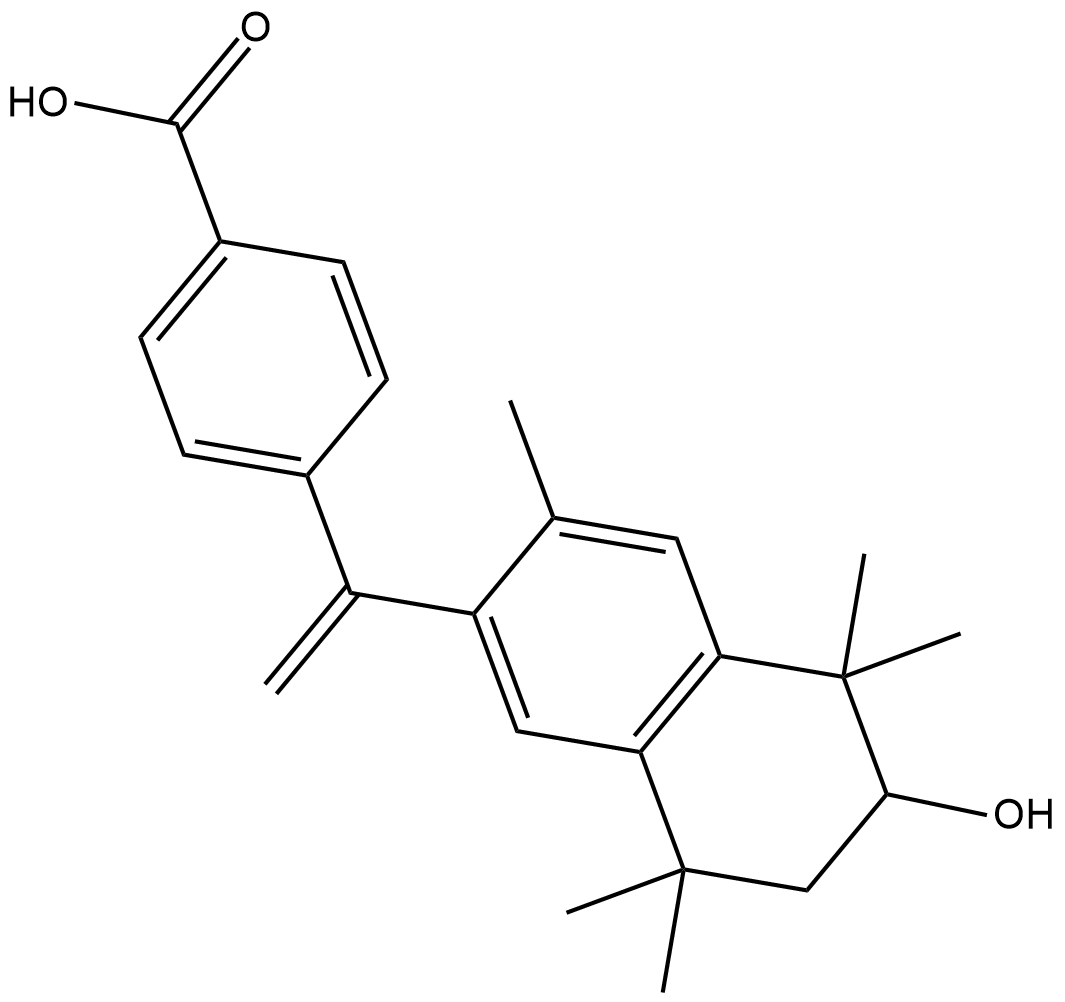
-
GC42580
6-hydroxy Chlorzoxazone
6-hydroxy Chlorzoxazone is a metabolite of chlorzoxazone.

-
GC18219
6-hydroxy Warfarin
6-hydroxy Warfarin is a metabolite of (+)-warfarin , which is a weaker vitamin K antagonist than (-)-warfarin .
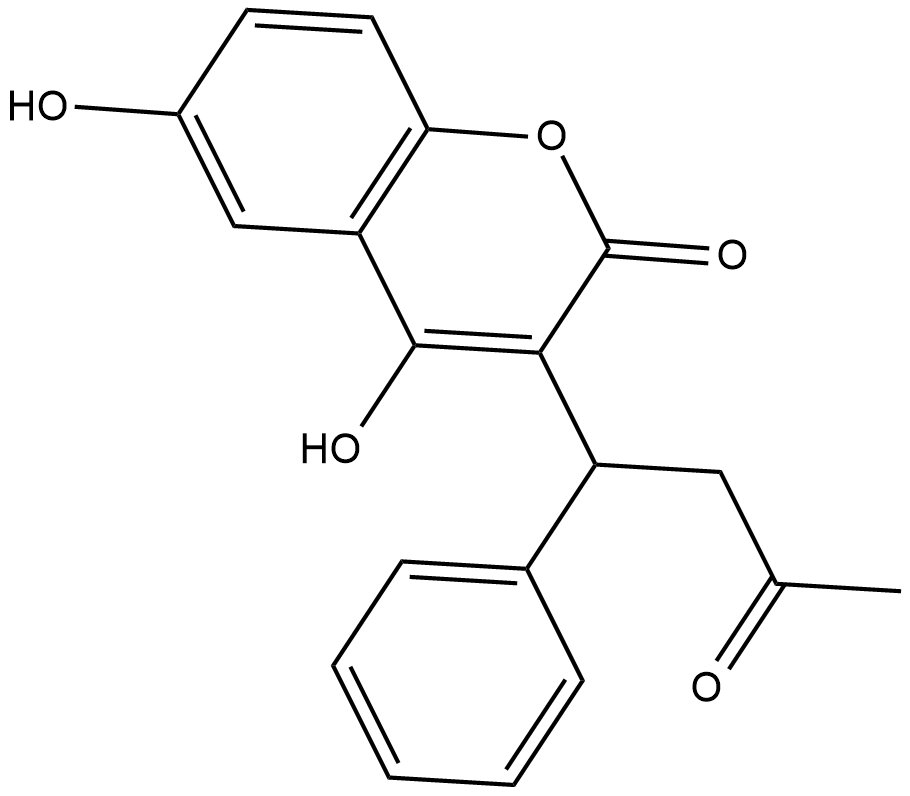
-
GC67988
6-Hydroxybenzbromarone
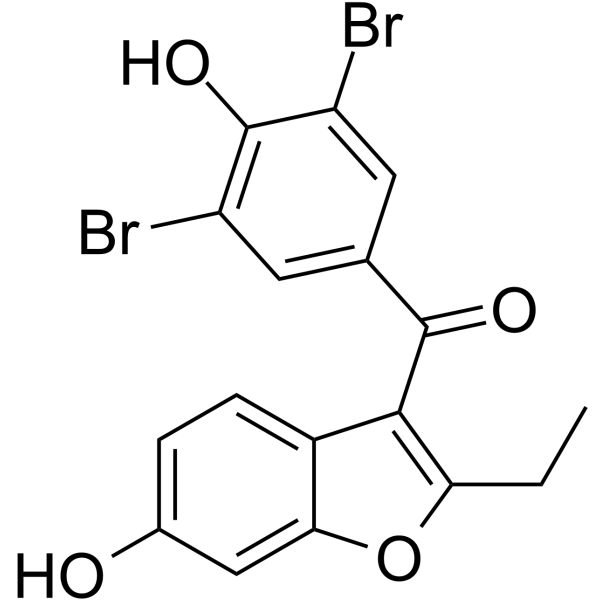
-
GC33704
6-Hydroxymelatonin
La 6-hydroxymélatonine est un métabolisme primaire de la mélatonine, qui est métabolisée par le cytochrome P450 (CYP) 1A2.
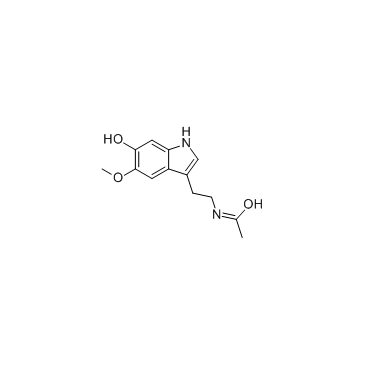
-
GC38278
6-Hydroxynicotinic acid
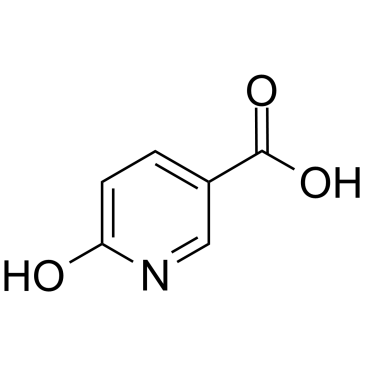
-
GC10067
6-Hydroxynicotinic acid
L'acide 6-hydroxynicotinique est un métabolite endogène.
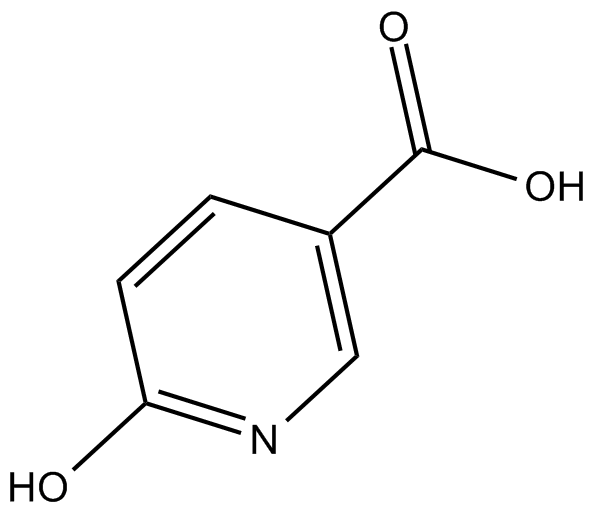
-
GC62816
6-Hydroxypyridin-2(1H)-one hydrochloride
Le chlorhydrate de 6-hydroxypyridin-2(1H)-one est un métabolite endogène.
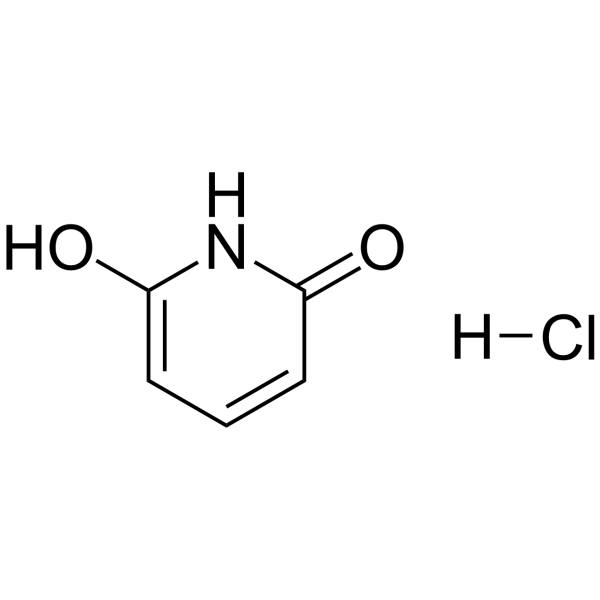
-
GC49235
6-Methylmercaptopurine
A metabolite of 6-mercaptopurine

-
GC49488
6-Methylmercaptopurine-d3
An internal standard for the quantification of 6-MMP

-
GC64741
6-Methylnicotinamide
Le 6-méthylnicotinamide, un dérivé du nicotinamide, est un métabolite endogène.
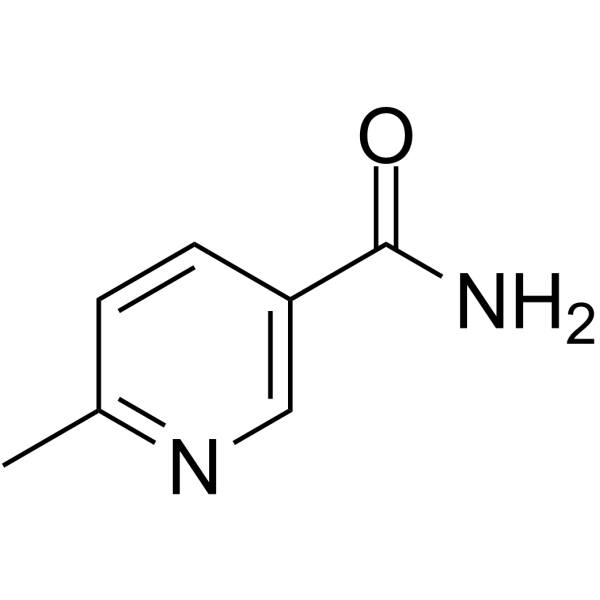
-
GC48721
6-O-Demethyl Griseofulvin
A metabolite of griseofulvin

-
GC42584
6-O-desmethyl Donepezil
6-O-desmethyl Donepezil is an active metabolite of the acetylcholinesterase inhibitor donepezil.

-
GC65015
6-Phosphogluconic acid trisodium
L'acide 6-phosphogluconique trisodique est un inhibiteur puissant et compétitif de la phosphoglucose isomérase (PGI) avec un Kis de 48 μM pour le glucose 6-phosphate et de 42 μM pour le fructose 6-phosphate.
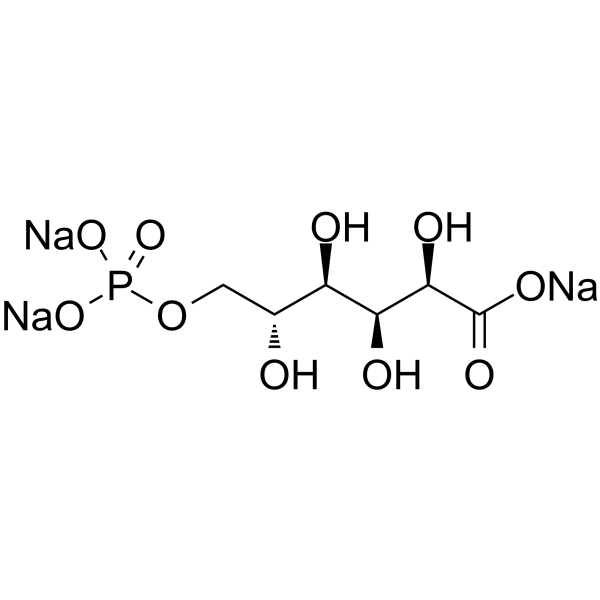
-
GC50613
673 A
ALDH1A inhibitor; depletes CD133+ cancer stem cells (CSC)

-
GC18335
6β-hydroxy Dexamethasone
6β-hydroxy Dexamethasone is a metabolite of dexamethasone that is more hydrophilic than the parent compound.
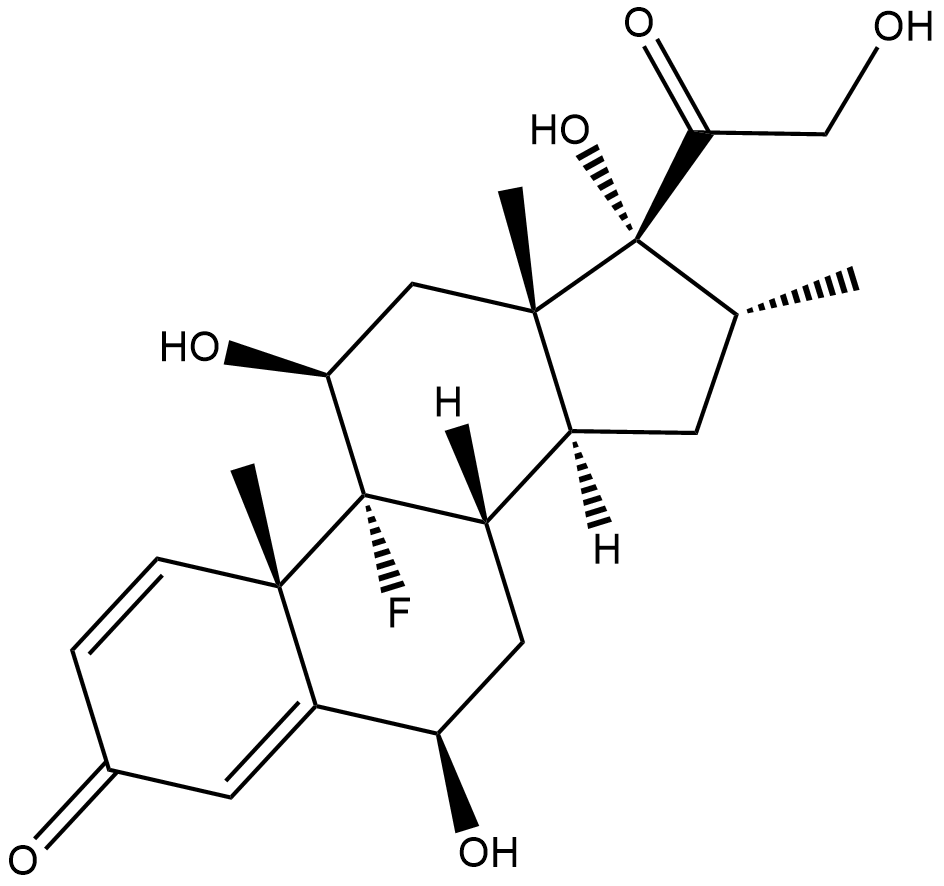
-
GC40087
7α-hydroxy-4-Cholesten-3-one
7α-hydroxy-4-cholesten-3-one est un intermédiaire dans la synthèse des acides biliaires À partir du cholestérol.

-
GC49298
7α-Thiomethylspironolactone
A major metabolite of spironolactone

-
GC49391
7α-Thiospironolactone
An active metabolite of spironolactone

-
GC46732
7(S),17(S)-dihydroxy-8(E),10(Z),13(Z),15(E),19(Z)-Docosapentaenoic Acid
A metabolite of DPA with antiinflammatory properties

-
GC10533
7,8-dihydro-L-Biopterin
La 7,8-dihydro-L-bioptérine est un produit d'oxydation de la tétrahydrobioptérine.
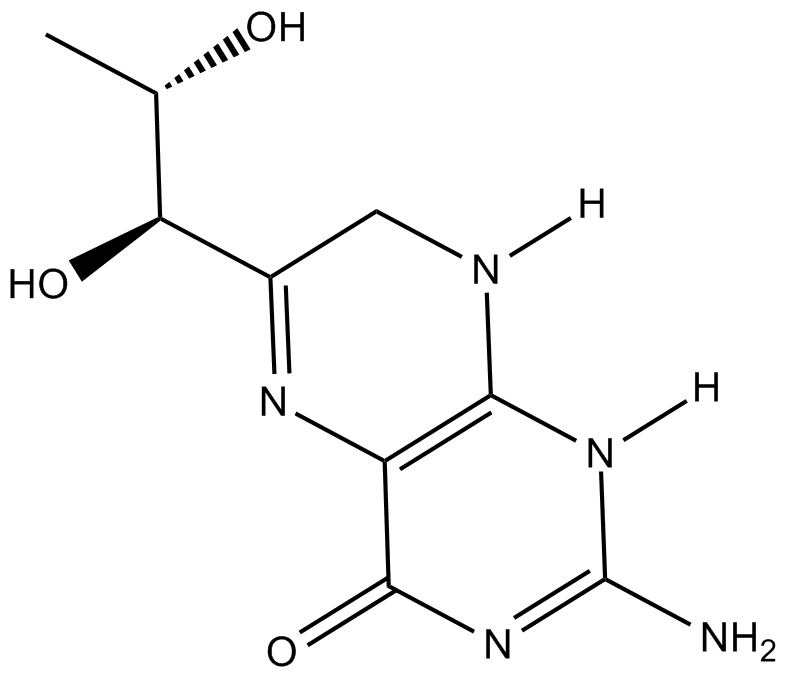
-
GC45673
7,8-Dihydroneopterin
La 7,8-dihydronéoptérine, un marqueur de l'inflammation, induit l'apoptose cellulaire dans les astrocytes et les neurones via l'amélioration de l'expression de l'oxyde nitrique synthase (iNOS).

-
GC33450
7-Dehydrocholesterol
Le 7-déhydrocholestérol est un précurseur biosynthétique du cholestérol et de la vitamine D3.
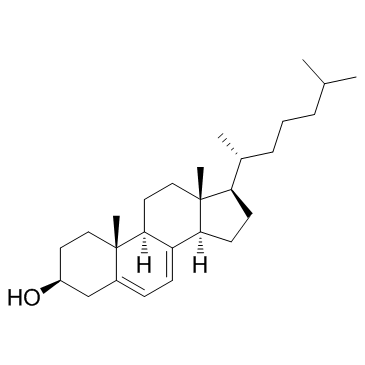
-
GC40978
7-epi Maresin 1
7-epi Maresin 1 is the inactive 7(S) epimer of Maresin 1, which contains a 7(R) hydroxyl group.

-
GC48649
7-hydroxy Chlorpromazine (hydrochloride)
An active metabolite of chlorpromazine

-
GC42606
7-hydroxy Coumarin Glucuronide (sodium salt)
7-hydroxy Coumarin glucuronide is a 7-hydroxy coumarin phase II metabolite that can be used as a standard for the analysis of 7-hydroxy coumarin metabolism.

-
GC42607
7-hydroxy Coumarin sulfate (potassium salt)
7-hydroxy Coumarin sulfate is a phase II metabolite of coumarin that can be used as an internal standard for the analysis of 7-hydroxy coumarin metabolism using GC- or LC-MS.

-
GC49748
7-hydroxy Etodolac
An inactive metabolite of etodolac

-
GC49051
7-hydroxy Methotrexate
Le 7-hydroxy méthotrexate est un métabolite majeur du méthotrexate

-
GC42608
7-hydroxy Methotrexate (sodium salt)
7-hydroxy Methotrexate (7-hydroxy MTX) is a phase I metabolite of MTX, which is converted by hepatic aldehyde oxidases.
